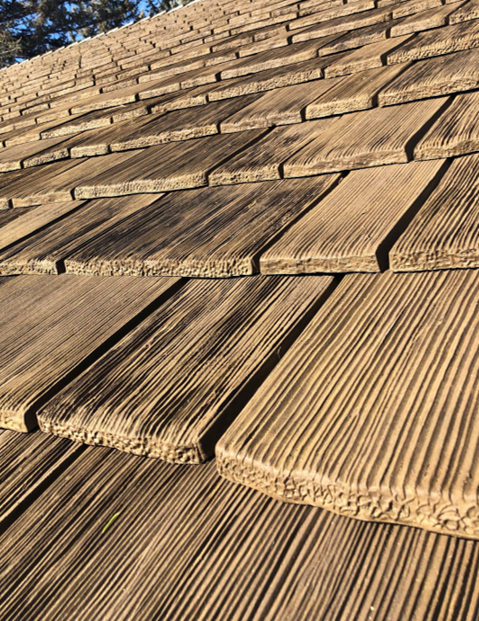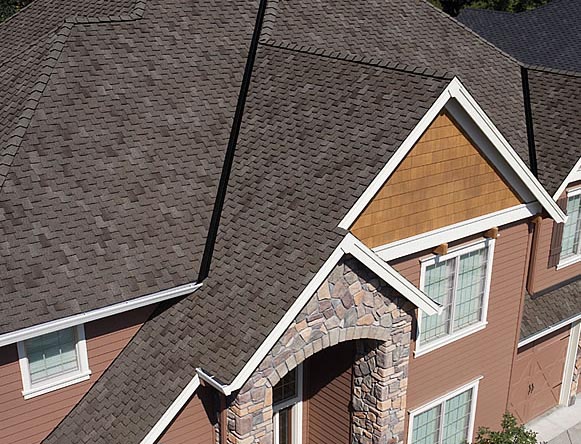Step-by-Step Guide to Finding the Right Roofing Companies in Gainesville
Step-by-Step Guide to Finding the Right Roofing Companies in Gainesville
Blog Article
Best Practices for Ensuring Appropriate Roof Ventilation
Making sure appropriate roof ventilation is crucial for the longevity and performance of a roof. A well balanced consumption and exhaust air vent ratio, generally 1:300, plays an essential duty, with consumption vents ideally placed at the lower edge of the roofing system for amazing air entrance and exhaust vents at the top for warm air exit. Routine inspections to identify obstructions and maintain clear air movement are paramount. Keeping insulation away from vents is critical to protect against airflow limitation. Comprehending these fundamental aspects establishes the phase for even more in-depth understandings into installment and upkeep techniques that can substantially boost your roof covering system's efficiency.
Understand Ventilation Basics
Correctly recognizing air flow basics is vital for ensuring the longevity and performance of roofing systems. Reliable ventilation alleviates moisture buildup and temperature extremes in the attic room, both of which can cause considerable structural damages in time. A well-ventilated roof helps in stopping common issues such as mold and mildew growth, timber rot, and ice dams, which can compromise the honesty of the roofing products and the underlying structures.
The main objective of ventilation is to assist in the movement of air, enabling a constant exchange in between the outdoor and interior atmospheres. This balance is attained through a mix of consumption and exhaust vents that interact to keep ideal airflow. Consumption vents, typically situated along the eaves or soffits, allow fresh air to enter the attic area, while exhaust vents, typically positioned at or near the roofing ridge, allow hot, damp air to leave.
Secret factors influencing the effectiveness of roof ventilation include proper placement, ample sizing, and ensuring that both consumption and exhaust vents are unblocked. Routine evaluation and maintenance are vital to determine potential clogs, damages, or ineffectiveness in the ventilation system, consequently protecting the roof's performance and sturdiness.
Sorts Of Roofing Vents
Roof vents play an essential role in keeping effective attic room air flow and, by expansion, the overall health and wellness of the roof system. Different kinds of roofing vents are offered, each with one-of-a-kind benefits customized to details roofing needs.

Soffit vents are installed under the eaves and operate in tandem with roofing system vents to make certain a balanced consumption and exhaust system. By enabling cooler air to get in from below, soffit vents facilitate the expulsion of warm air through top vents. Gable vents, situated on the outside wall surfaces of the attic, offer another efficient solution, specifically in homes with gable roofings.
Assess Your Current Ventilation

Next, take into consideration the age and problem of your roof covering materials and air flow components. Older systems may not adhere to present building codes or may have weakened with time, reducing their efficiency. Conduct a comprehensive exam to determine any kind of indicators of deterioration, such as corrosion, damage, or gaps that can jeopardize the system's efficiency.
In addition, measure the attic room temperature and moisture degrees. Heats and moisture can suggest inadequate air flow - roofing companies gainesville florida. Utilize a hygrometer and thermostat to obtain precise analyses, comparing them with outdoor problems. Relentless disparities suggest possible issues that need dealing with.
Installment Best Practices
Effective setup of roof ventilation systems is extremely important for guaranteeing ideal efficiency and durability. Correct installation begins with recognizing the specific ventilation needs of the roof covering and the building it covers. This includes determining the proper ratio of consumption to exhaust vents, generally adhering to the 1:300 rule, which stipulates one square foot of ventilation for every 300 square feet of attic room flooring room.

Consumption vents must be installed at the roofing system's reduced side, frequently in the soffits, to enable trendy air to get in. Exhaust vents, on the various other hand, need to be mounted near or this content at the roof covering's peak to This Site assist in the leave of warm, wet air.
Seal all vent connections meticulously to avoid air leaks and possible water seepage. Usage high-grade products and follow supplier standards to make certain sturdiness and efficiency. In addition, integrating ridge vents with baffles can dramatically enhance airflow efficiency by preventing wind-driven rain and snow from entering the attic.
Eventually, exact installment of roof covering ventilation systems minimizes possible concerns such as mold and mildew growth, ice dams, and structural damage, guaranteeing the roof covering's honesty and the structure's total wellness.
Regular Upkeep Tips
Uniformity in maintenance practices is basic to making sure the long-lasting effectiveness of roof covering ventilation systems. Throughout these evaluations, make certain that vents are free of particles, nests, and other blockages that can impede airflow.
Cleansing the vents is one more essential job. Make use of a soft brush or a vacuum to eliminate dust and debris from intake and exhaust vents. Beware not to damage the vent screens or louvers throughout the process. In addition, inspect the attic area for any kind of indications of water damage, which could endanger the integrity of the roof.
Appropriate insulation is similarly vital. Guarantee that attic insulation does not block the vents, as this can significantly limit air movement. Rearrange or change it to maintain an efficient obstacle. if any kind of insulation has shifted or worked out.
Finally, change any damaged or missing elements promptly. Busted vents, fractured shingles, or shabby blinking can all add to inadequate ventilation and must be addressed right away. Regular maintenance makes sure that the roof covering air flow system operates optimally, thus prolonging the life expectancy of More Help the roofing itself.
Final Thought
Ensuring appropriate roof covering ventilation is extremely important for keeping the effectiveness and resilience of a roof covering system. Adherence to the 1:300 intake and exhaust air vent proportion, coupled with the critical placement of vents, is necessary.
A balanced consumption and exhaust air vent ratio, generally 1:300, plays a pivotal function, with consumption vents ideally placed at the reduced edge of the roof covering for amazing air access and exhaust vents at the top for cozy air leave. Intake vents, normally situated along the eaves or soffits, allow fresh air to go into the attic room room, while exhaust vents, typically positioned at or near the roof ridge, enable hot, moist air to get away.
Soffit vents are mounted under the eaves and job in tandem with roofing system vents to guarantee a balanced consumption and exhaust system. By permitting cooler air to go into from below, soffit vents facilitate the expulsion of hot air via upper vents. Adherence to the 1:300 consumption and exhaust vent ratio, combined with the critical positioning of vents, is necessary.
Report this page